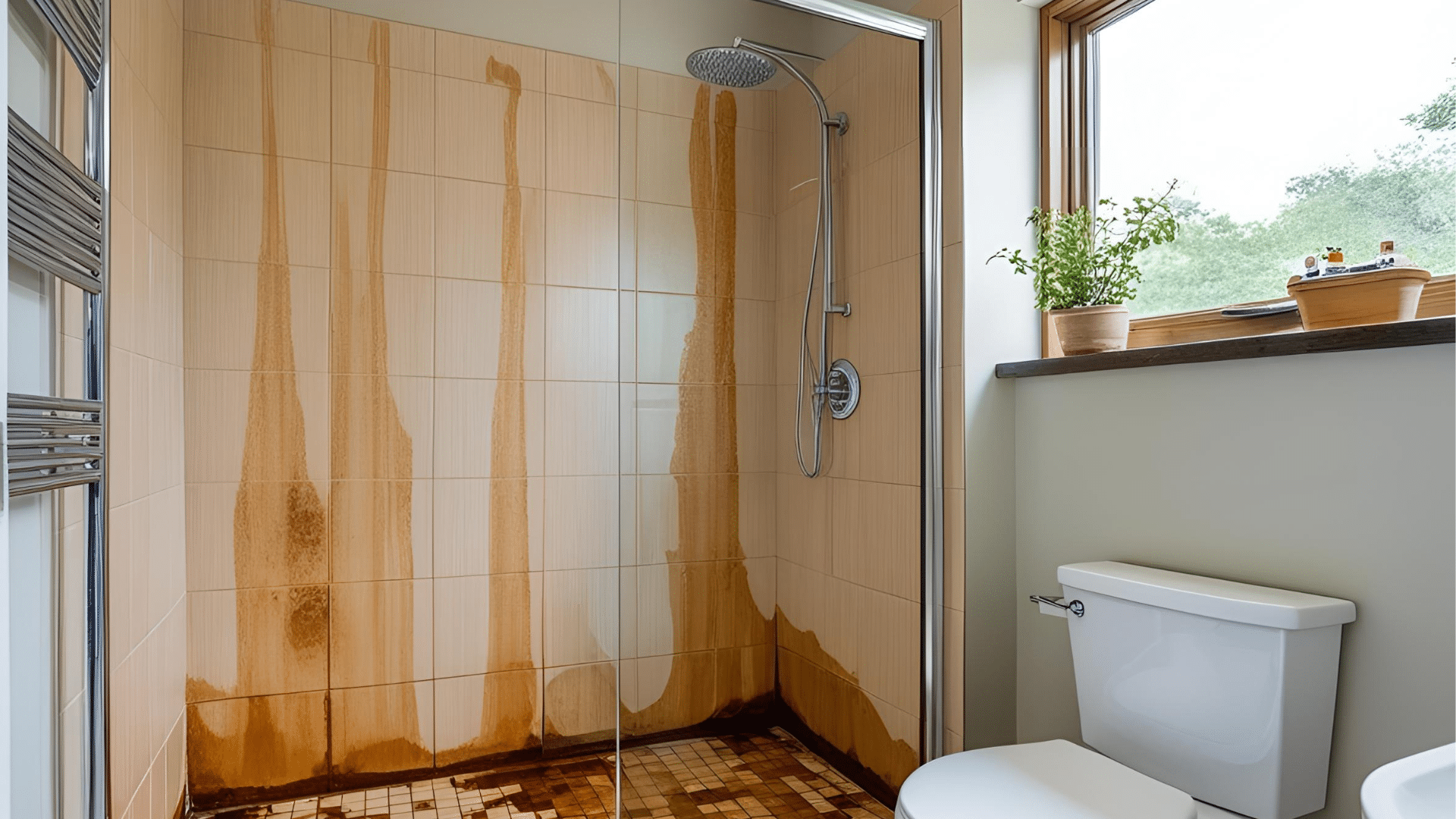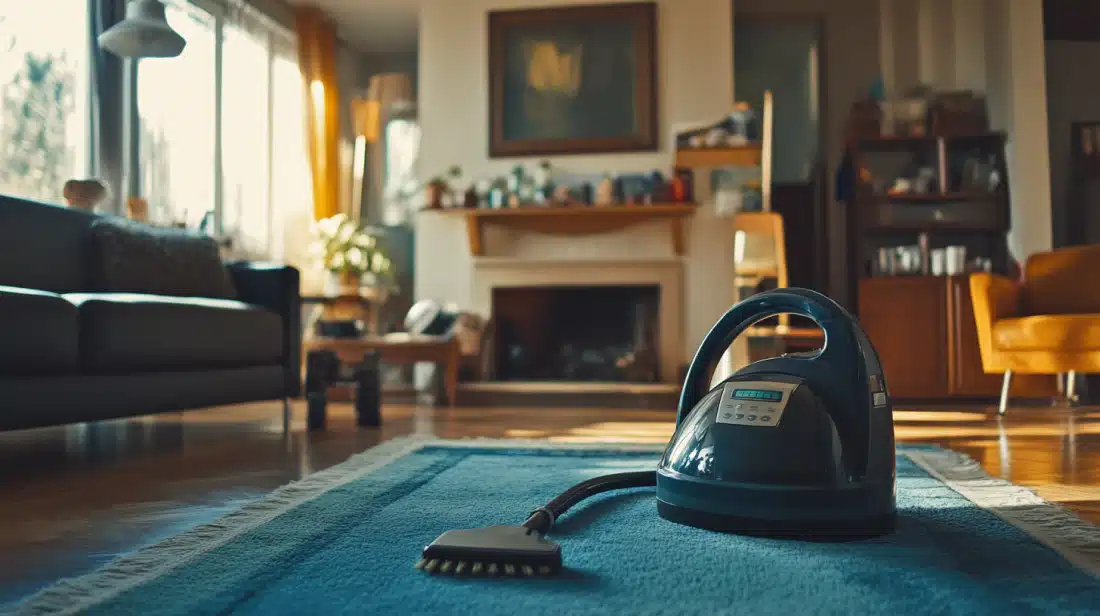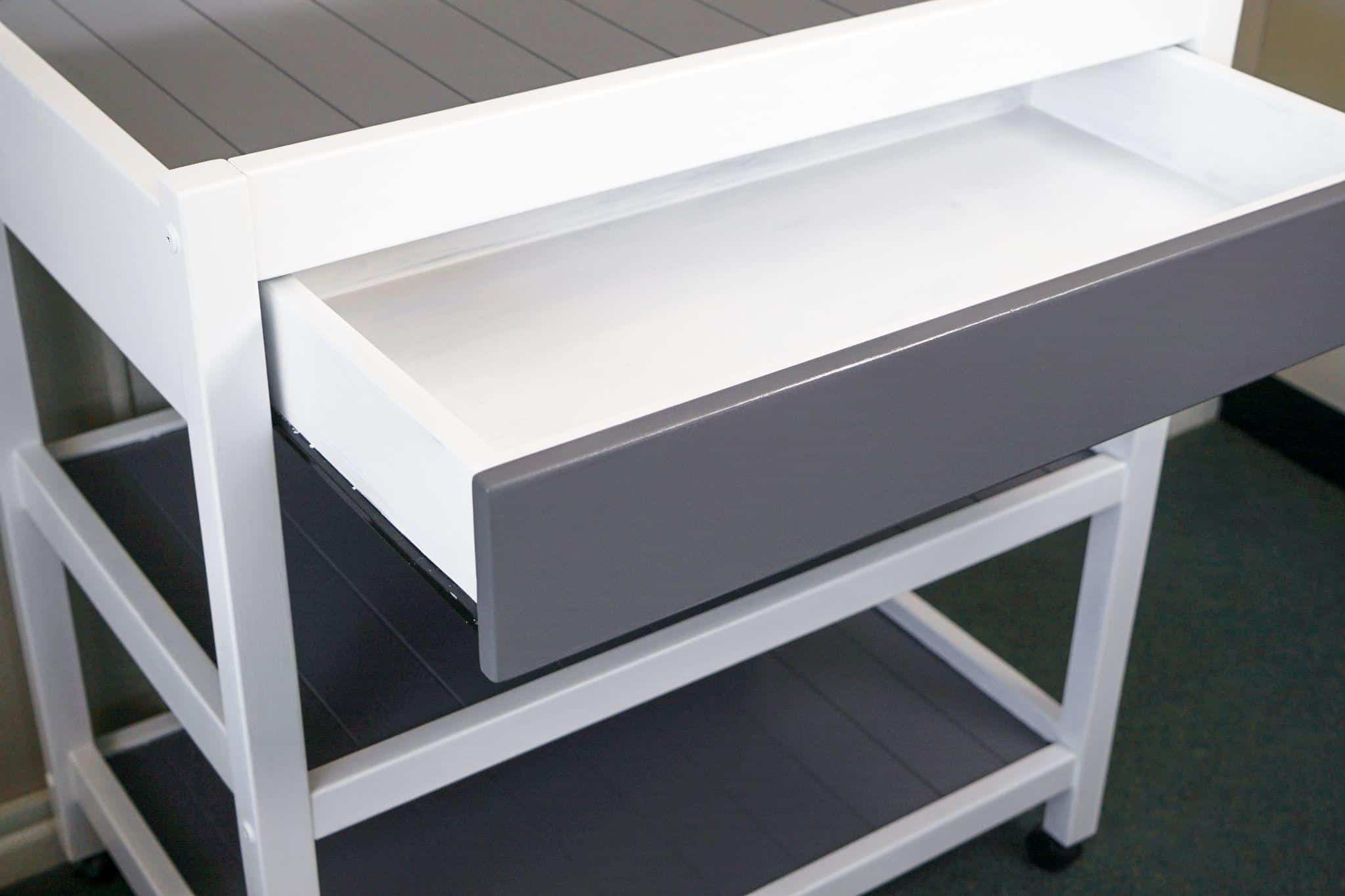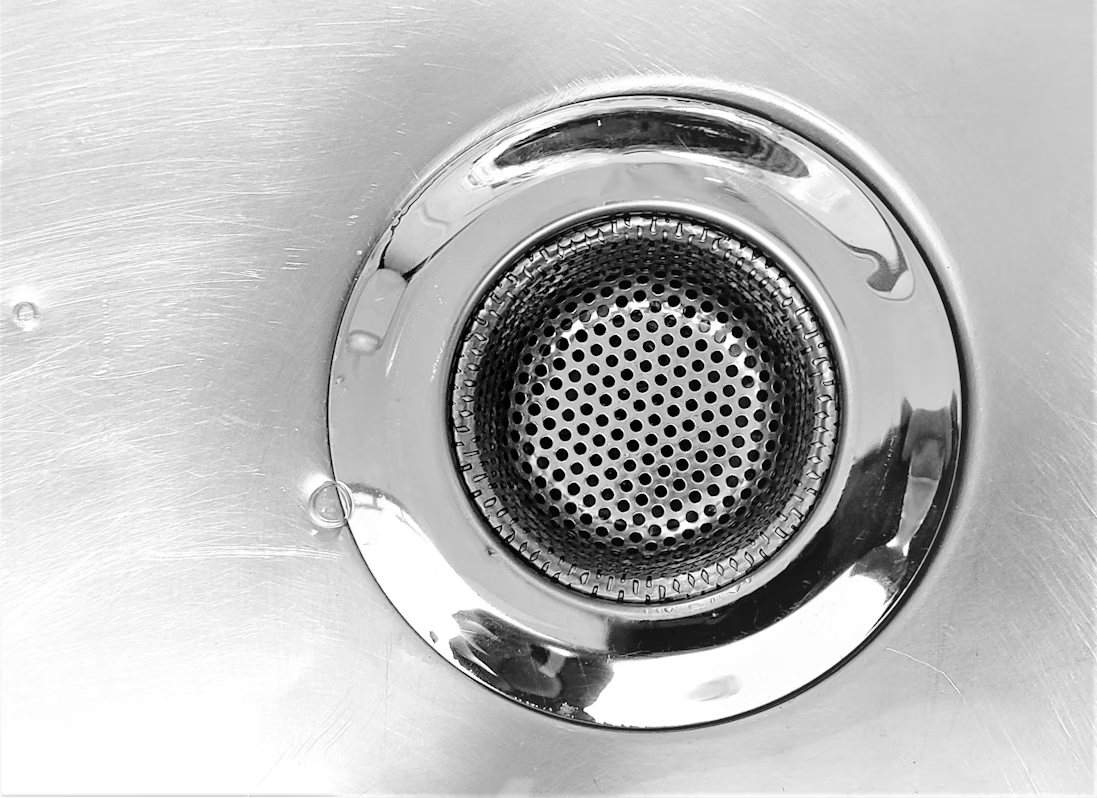How to Remove Orange Stains from Your Shower
Have you ever stepped into your shower and noticed those unsightly orange stains? It’s not exactly the best way to start your morning.
Either they’re streaking down your shower walls or forming rings around your drain, these stains are common bathroom problems. They come from either iron in your water or bacterial growth in damp spots.
The good news? They’re fixable! This guide explains what causes those orange marks, whether you should worry about them, and most importantly, how to get rid of them.
With some simple cleaning methods and prevention tips, you can keep your shower looking clean and fresh.
What Are Orange Stains in the Shower?
Orange stains in your shower are a common yet frustrating sight, often appearing first thing in the morning. These stains usually come from two main sources: iron in your water or bacterial growth.
Iron in your water supply is one of the most common causes of orange stains. When water with high iron content mixes with soap and is exposed to air, it forms rusty orange marks on your shower surfaces.
This oxidation process, similar to rusting metal, leads to stains around drains, on shower floors, and along the waterline. Even if your water looks clear when it first comes out of the faucet, it can turn orange as it dries and reacts with oxygen.
Another cause is Serratia marcescens, a type of bacteria often referred to as “pink mold.” Despite its name, it typically appears orange or reddish and thrives in damp, warm areas like your shower. It grows in places where water doesn’t dry quickly, such as grout lines or shower curtains.
Identifying the Type of Stains
Telling apart iron stains from mold stains helps you clean them correctly. Iron oxide stains appear reddish-orange and don’t have a smell. They form patterns where water flows or pools, like around drains or at the water line.
Mold and mildew stains look more yellowish-orange or sometimes pink. They have a musty smell, especially in enclosed shower spaces.
Mold grows in spots with constant moisture, while iron stains show up where water dries repeatedly. If you wipe the surface and the stain comes back quickly, it’s likely mold. Iron stains develop more slowly over weeks or months.
Iron Oxide (Rust) Stains
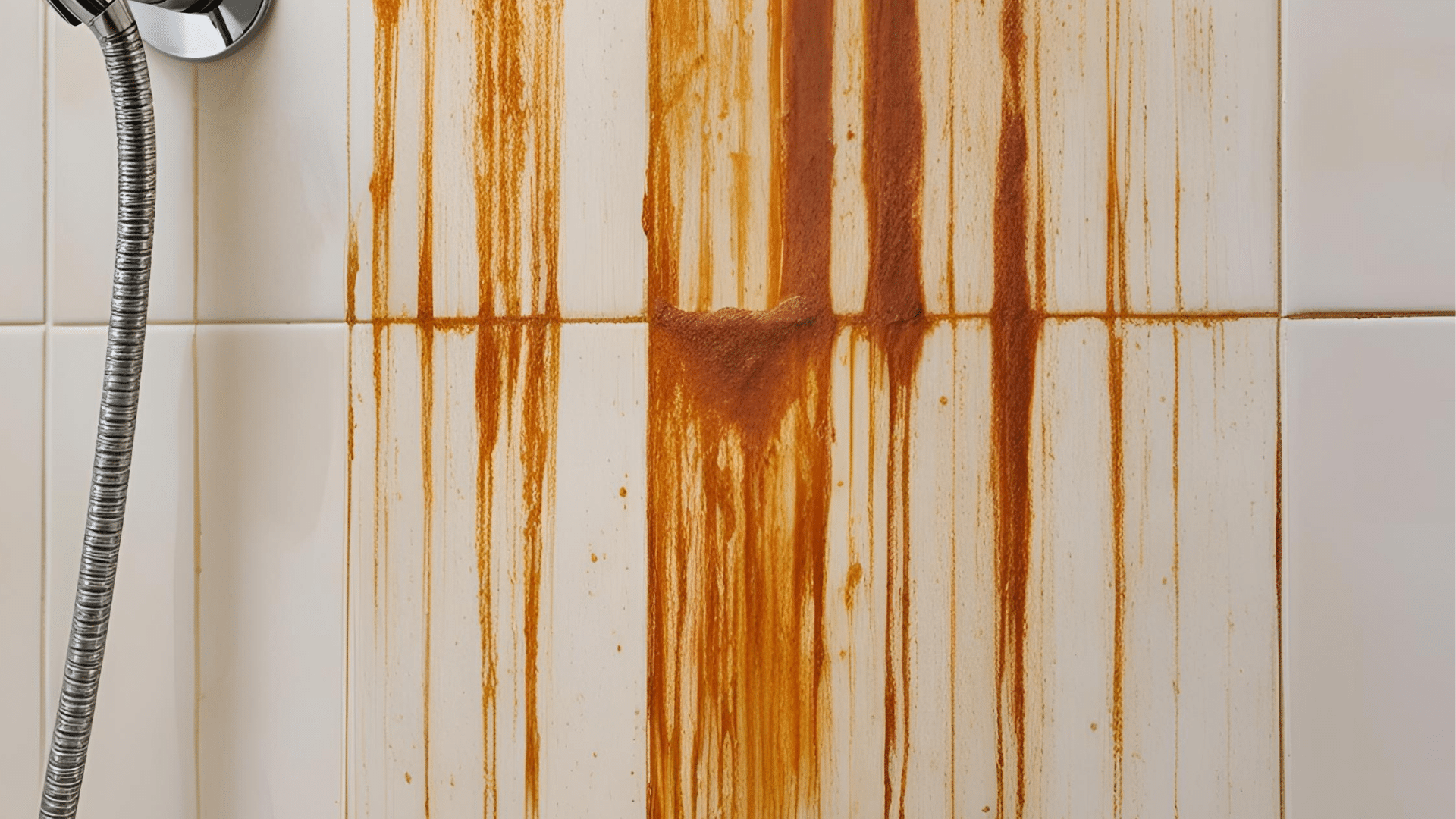
Iron oxide stains come from water that contains high levels of iron. This is common in many household water supplies.
When this iron-rich water sits on shower surfaces and dries, it leaves behind orange or rusty-colored marks. These stains often show up around drains, on shower floors, and along the waterline in tubs.
Even if your water looks clear when it first comes out of the faucet, it can still turn orange after it’s exposed to air through a process called oxidation. These stains look bad but aren’t harmful to your health.
Mold and Mildew Stains

The yellowish-orange stains in your shower might be mold or mildew. These grow in warm, wet places – exactly what your shower provides.
Unlike iron stains, mold and mildew can cause health problems like breathing issues, infections, and stomach sickness. You can often tell these stains apart from rust by their smell – they usually have a musty odor.
They commonly grow on grout, caulking, shower curtains, and in corners where water sits. Bathrooms with poor air flow are most likely to have these problems.
Is There a Health Concern?
The health risks of shower stains depend on what’s causing them. Iron oxide stains, while unattractive, pose no health threat to you or your family. You can safely use a shower with rust stains – they won’t make you sick or cause skin problems.
The water is safe to drink and bathe in, even with high iron content. However, mold and mildew stains are a different story. These can cause real health problems, especially for people with allergies, asthma, or weak immune systems.
They may trigger coughing, sneezing, eye irritation, and breathing problems. Some people might get skin rashes from contact with mold. In serious cases, mold exposure can lead to infections in the lungs and other parts of the body.
If you notice mold growing in your bathroom, it’s best to clean it quickly to protect your health.
How to Remove Orange Stains
Getting rid of orange stains requires the right cleaning method based on their cause. For fresh stains, start with milder options before moving to stronger chemicals.
Most stains respond well to regular cleaning if caught early. The longer the stains sit, the harder they are to remove.
Here are four methods that work well on shower orange stains, from natural options to stronger commercial products. Choose based on the severity of the stain and what cleaning supplies you have on hand.
Natural Citric Acid Solutions
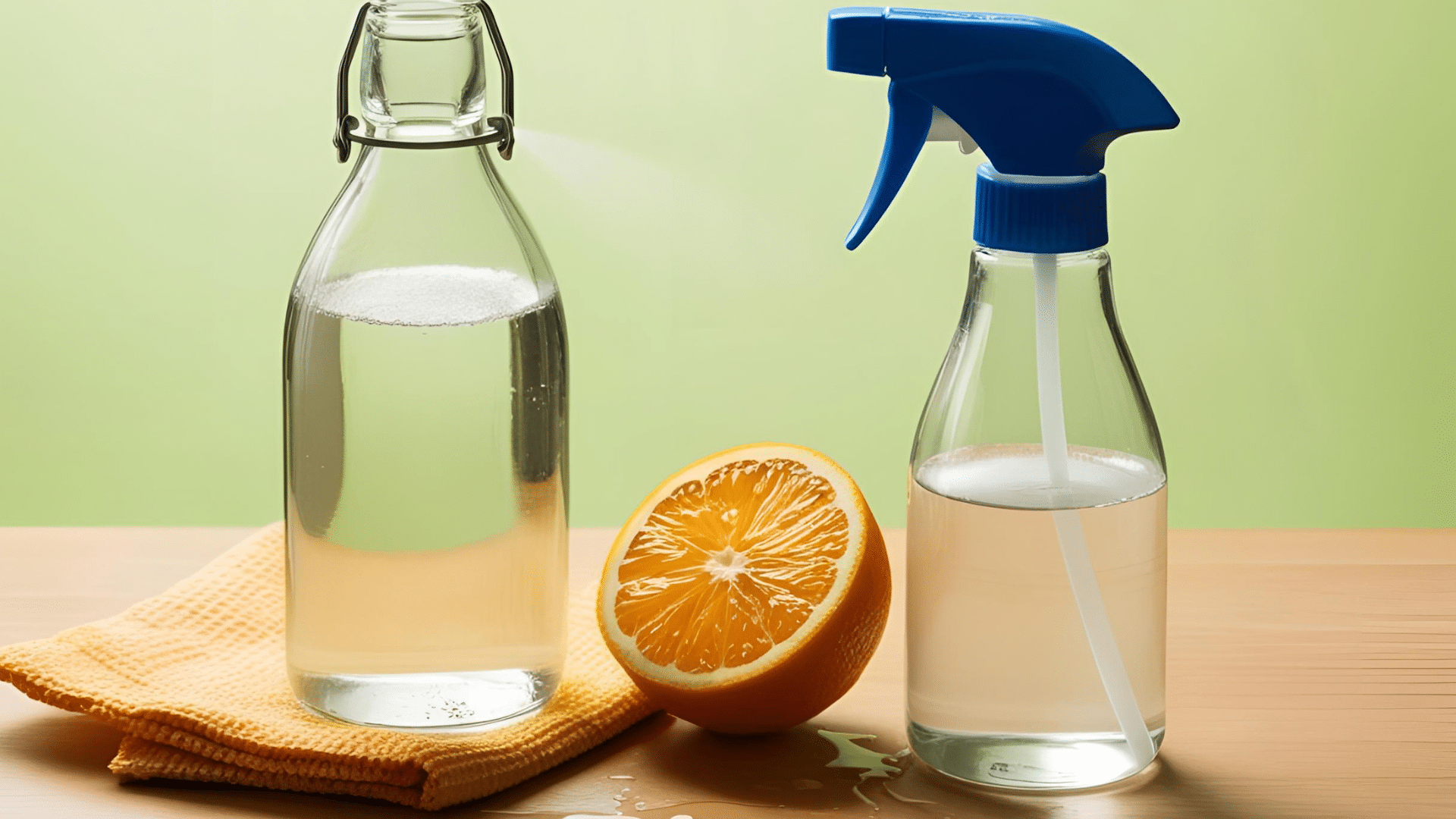
White vinegar and lemon juice work well on orange stains because their acid breaks down the mineral deposits. To make a simple cleaner, mix equal parts white vinegar and water in a spray bottle.
For tougher stains, use straight vinegar. Spray the solution on the stained areas and let it sit for 10-15 minutes so the acid can work on the stains.
For lemon juice, cut a lemon in half and rub it directly on the stain, or squeeze the juice into a spray bottle. After the solution sits, scrub with a sponge or brush, then rinse with clean water.
Baking Soda Paste
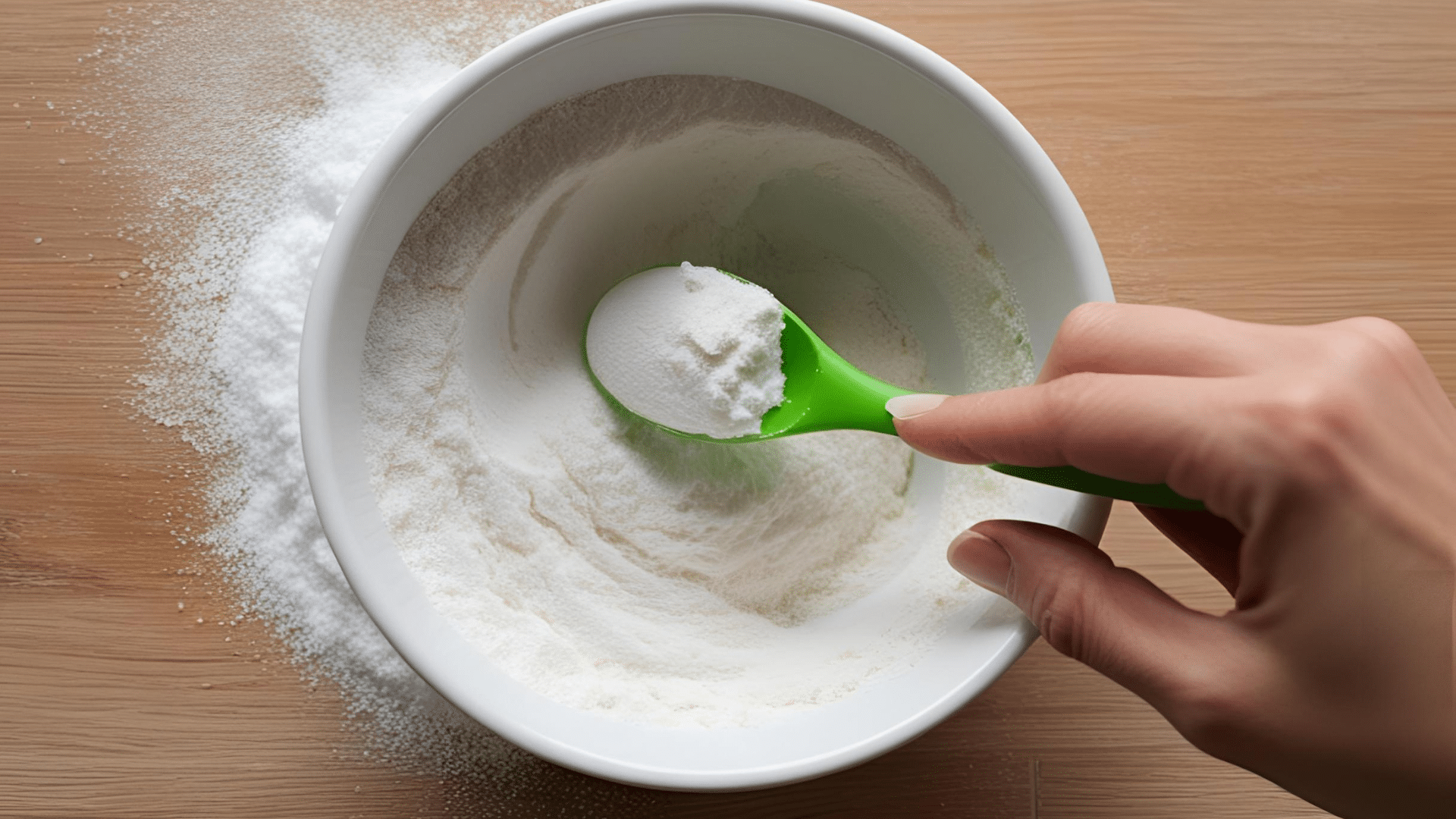
Baking soda is a mild abrasive that scrubs away stains without scratching surfaces. Mix baking soda with enough water to create a thick, smooth paste—about the texture of toothpaste.
Apply this paste directly to the stained areas using your fingers or a sponge. Let it sit for 20-30 minutes to help break down the stains. Then scrub the area with a brush or sponge using circular motions.
The slight grittiness helps lift the stains. Rinse thoroughly with clean water to remove all the baking soda. For tough stains, you might need to repeat this process.
Commercial Cleaners
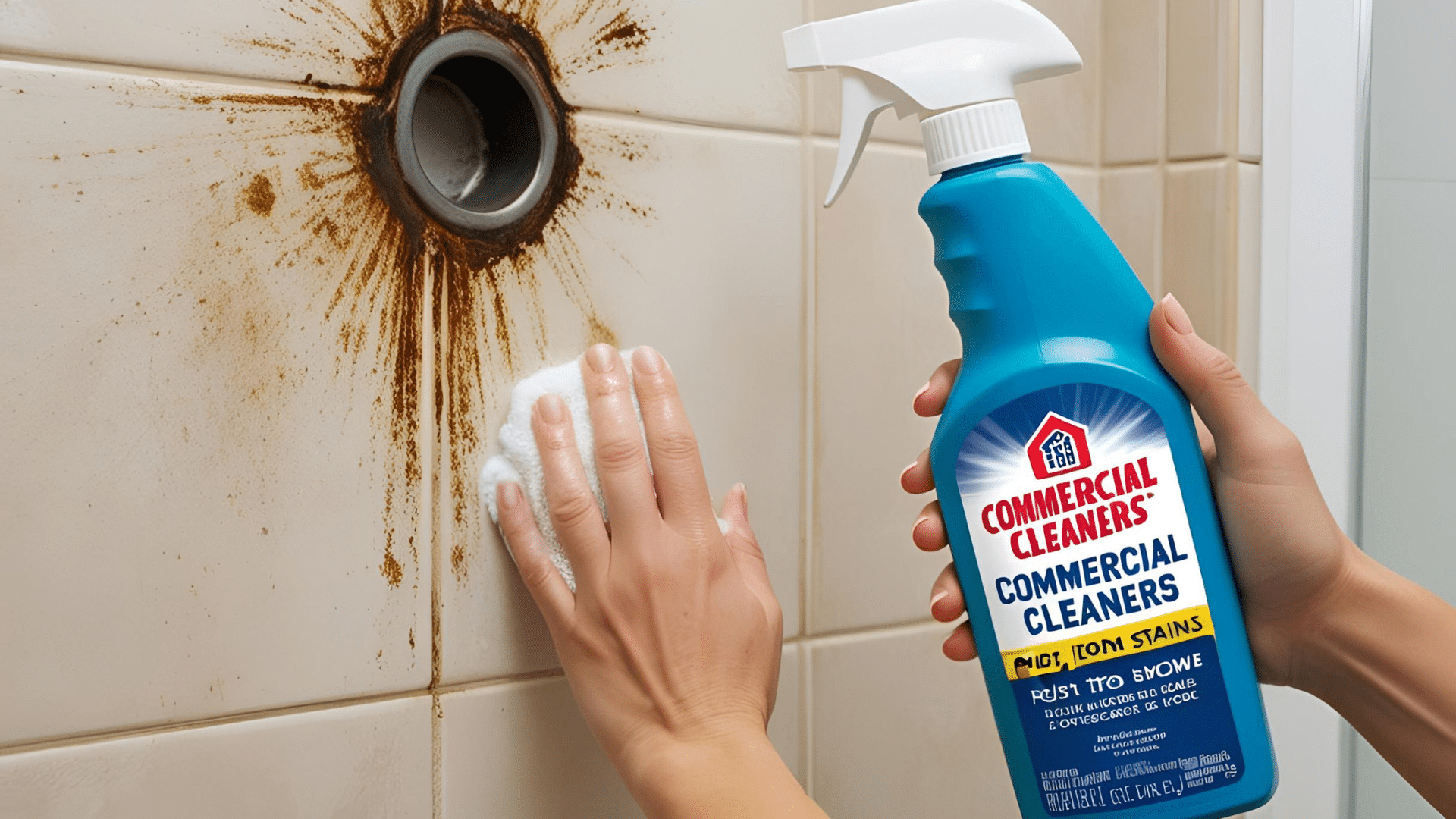
Store-bought cleaners made for bathroom stains often work faster than home remedies. Look for products that mention removing rust, iron stains, or mold.
Please read the label to make sure it’s safe for your shower surface (tile, fiberglass, etc.). Always follow the instructions on the bottle for how long to let it sit and how to apply it. Wear gloves to protect your hands, and open a window for fresh air.
Apply the cleaner to the stained area, wait the recommended time, then scrub as directed. Rinse completely when finished to remove all chemical residue.
Bleach-Based Cleaners for Mold/Mildew

Bleach is very effective for mold and mildew stains but needs careful handling. Mix one part bleach with four parts water in a spray bottle.
Never mix bleach with other cleaners, especially those with ammonia, as this creates toxic gas. Open windows and turn on fans for good air flow. Wear gloves and eye protection.
Spray the solution on the stains and let it work for 5-10 minutes, but don’t let it dry. Scrub gently with a brush, then rinse well with clean water. The bleach kills the mold and removes the color. Always keep the bathroom well aired out when using bleach.
Preventing Orange Stains in the Future
It is easier to stop orange stains before they start than to clean them later. The key is to keep your shower dry and address any water quality issues in your home.
Most stains form because water sits on surfaces too long or because your water contains high levels of minerals.
With some simple daily habits and possibly a few home improvements, you can keep your shower looking clean longer and reduce the frequency of deep cleaning.
Regular Maintenance
The simplest way to prevent orange stains is to keep your shower dry. After each shower, wipe down the walls, doors, and fixtures with a squeegee or microfiber cloth for 30 seconds. This removes water that would otherwise sit and create stains.
For shower curtains, spread them out fully after use so they can dry instead of staying bunched up and wet. Clean your shower weekly with a mild bathroom cleaner before stains have a chance to set in.
Pay special attention to corners and grout lines where water collects. Also, turn on the bathroom fan during and after showers to remove moisture from the air.
Water Treatment Options
If you keep getting orange stains despite good cleaning habits, your water might be the problem. Start by testing your water to find out what minerals it contains.
Many plumbing companies offer free water testing services, or you can buy test kits at home improvement stores. If the test shows high iron levels, consider installing a water softener or iron filter for your whole house.
These systems remove minerals before the water reaches your bathroom. While they cost more upfront, they save money over time by reducing damage to fixtures and making cleaning easier. For less severe problems, shower head filters can help reduce some mineral deposits.
Common Mistakes to Avoid
When dealing with orange shower stains, people often make errors that damage surfaces or let the problem return quickly. These missteps waste time and money since you’ll need to clean more often or even replace shower parts.
Knowing what not to do is just as important as knowing the right cleaning methods.
- Using steel wool or harsh scrubbing pads damages shower surfaces
- Scratched surfaces collect more stains and bacteria over time
- Only removing visible stains without fixing the root cause ensures a quick return
- Ignoring water quality issues when that’s the source of stains
- Waiting too long between cleanings makes stains harder to remove
- Skipping ventilation after showers creates ideal conditions for mold growth
- Using the wrong cleaning products can make stains worse or damage surfaces
Conclusion
Orange stains in your shower don’t have to be a permanent fixture in your bathroom. By understanding what causes them—either iron in your water or bacterial growth in damp areas—you can tackle them effectively.
Depending on the type and severity, clean them using vinegar, baking soda, commercial cleaners, or bleach. Then, prevent their return by wiping down your shower after use and considering water treatment if needed.
Avoid common mistakes like using scratchy cleaning tools or ignoring the root cause. With these simple steps, you’ll enjoy a cleaner, healthier shower space without the hassle of stubborn orange stains.

